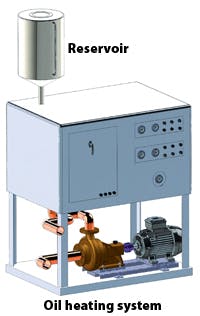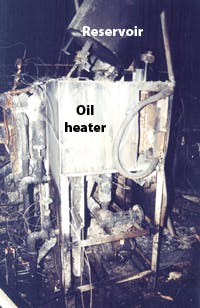Up in flames: When engineers don’t think through product configuration
The first incident took place when an oil heat-transfer unit caused a fire that nearly destroyed a small manufacturing facility. The heating system delivered oil at a specific temperature to a molding operation. The temperature controller in the heating system failed, drastically overheating the oil. The oil then expanded to completely fill the oil reservoir. Workers were horrified to observe oil flowing out the expansion tank onto the heater. The oil then immediately ignited. The fire burned rapidly, encompassing the small facility before the fire department arrived.
Charles C. Roberts, Jr., Ph.D., P.E. is an engineering consultant in the areas of accident reconstruction, failure analysis, structural analysis, heat transfer, fire origin analysis, computer analysis, mechanics, and biomechanics. He can be reached at [email protected].
About the Author
Charles Roberts, Jr.
Charles C. Roberts, Jr., Ph.D., P.E. is an engineering consultant in the areas of accident reconstruction, failure analysis, structural analysis, heat transfer, fire origin analysis, computer analysis, mechanics, and biomechanics. He can be reached at [email protected].




